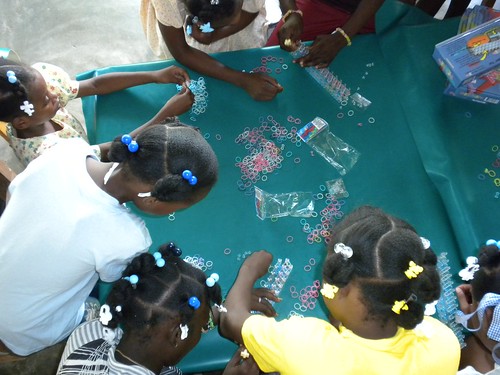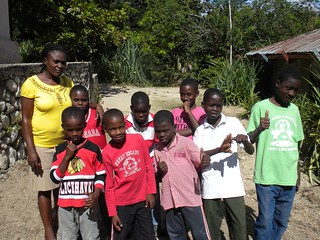The story of Haiti is one of survival in spite
of tremendous odds. Mennonite Central Committee partners there often put
their analysis of Haiti’s current situation in a historical context.
The story begins in 1804, the year of Haiti’s independence from
French colonization and slavery, and the establishment of the first
black republic. But the United States, France and Spain, fearing slave
rebellions in their own countries and colonies, punished Haiti with
trade embargoes. Over the years, hardship continued, with multiple U.S.
military interventions, the accumulation of debt by dictators and unjust
trade and economic policies throughout the 1990s.
Even the impact of the 2010 earthquake, a natural event, was made far
more disastrous by human factors. Many farmers had migrated to cities
like Port-au-Prince because they could no longer make a living — due in
part to the cheap imported rice from the United States.
However, response to the 2010 crisis presented an opportunity for change.
MCC and other groups continue to work on ensuring that the people of
Haiti are included, involved and consulted throughout the processes of
relief, reconstruction and development. Our contribution to the recovery
is small, but being informed by local priorities is effective.
International actors and policymakers rallied in support of Haiti,
pledging billions of dollars in aid. U.S. officials who were put in
charge of relief and reconstruction promised to “build back better.”
Now almost four years later, this goal seems like a distant memory.
The rallying cry of the international community sounds more like
a whimper.
Haitians wonder what has happened to the billions of dollars in aid
that were pledged. Even though millions of dollars have been spent, many
Haitians continue to experience poverty.
Nearly 300,000 people continue to live in tent camps. Many are living
in so-called transitional shelters. Those who are still living in tents
have few options for finding a permanent home.
U.S. aid in Haiti has tended to focus on private-sector industrial
growth rather than direct support to earthquake victims. Millions of
dollars have been spent on an industrial park in northern Haiti. These
types of investments are supposed to create jobs for the Haitian people.
But it is unclear how low-wage factory jobs that pay up to $5 per day
will allow Haitians to support their families, much less raise the
standard of living.
MCC’s partners in Haiti call for a development approach that
prioritizes the most vulnerable and holistically addresses the
population’s needs. For example, the 300,000 people living in tents
deserve to have one of their most basic human needs — dignified housing —
met. More resources should be devoted to such needs.
The U.S. and other international actors in Haiti should be more
transparent and consultative with Haitian civil society when carrying
out development projects. When Haitians themselves are in control and at
the center of the rebuilding process, U.S. aid efforts will be far more
effective. See
washington.mcc.org/advocate/alerts to learn about advocating for aid accountability in Haiti.
Haiti’s story can go beyond mere survival to a country that thrives
and prospers. The Book of Proverbs says wisdom “walks in the way of
righteousness, along the paths of justice” (8:20). Wise policies for
Haiti will foster justice by focusing on the most vulnerable.
Theo Sitther is senior legislative associate for international
affairs in the Mennonite Central Committee U.S. Washington Office.











